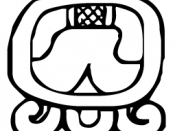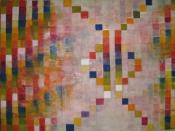There are a variety of cultures that have contributed to make our societies what they are today. A culture that influenced a lot the way we're living now despite its late discovery is the Mayas. They are one of the best known ancient civilizations thanks to their remarkable constructions and talent in art but principally for their calendar. The Mayas had the most accurate calendar made at that time. They actually had two calendars which they used together, the "Haab Calendar," which has 365 days and the "Tzolkin Calendar," which had only 260 days. Both calendar cycles end after 52 years and after reaching this point a new calendar round began. A third cycle, called also the "long count," marks the beginning of the Mayas civilization. If we convert this starting point in our calendar, it would be on August 13, 3114 BC. Considering that the Mayas civilization started in 2600 B.C
they did not exist at the starting point of their calendar. What is the meaning of this date? What event happened for the Mayas to take it as a starting point?
In this project we are going to focus on two main theories and try to find enough proof to be able to verify the theory that will reveal the mystery of the Mayas' calendar.
The first theory is based on a brilliant story; this anecdote was brought to us during the trip to the Mystery Park.
The Gods, seeing some potential in the Mayas, visited them on hearth, taking back with them fifty 13 years' old boys. When the Gods return them, 60 years after, they had acquired important knowledge in mathematic, astronomic and architecture. The boys, who had become 73 years' old men, shared they knowledge with the rest of the population and...


